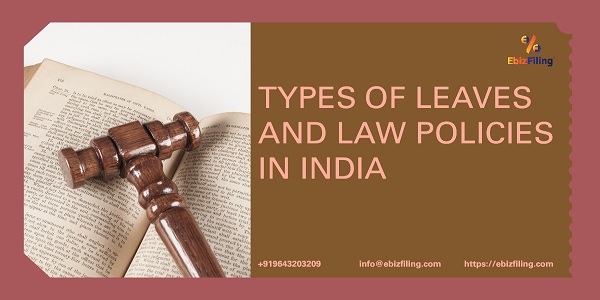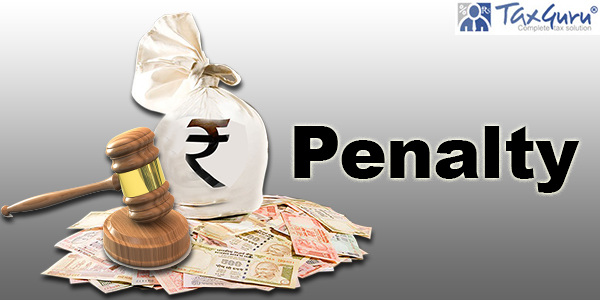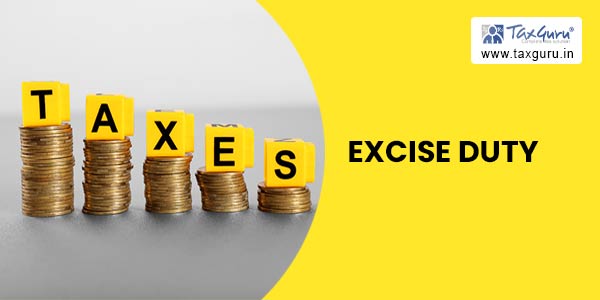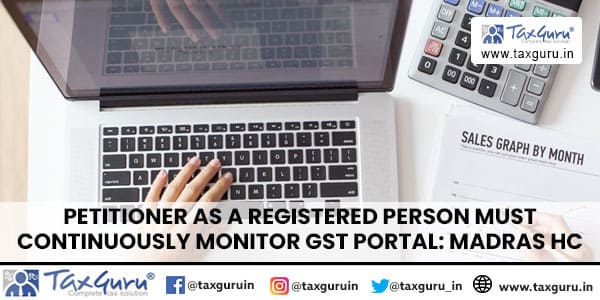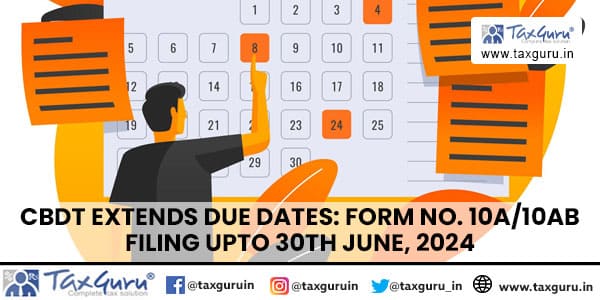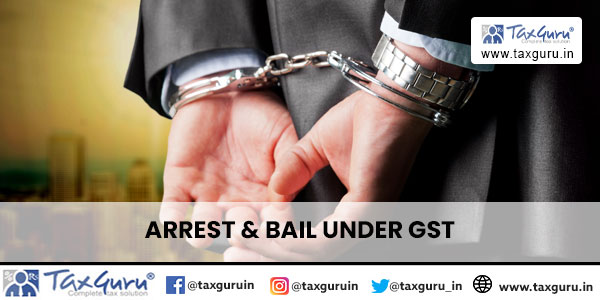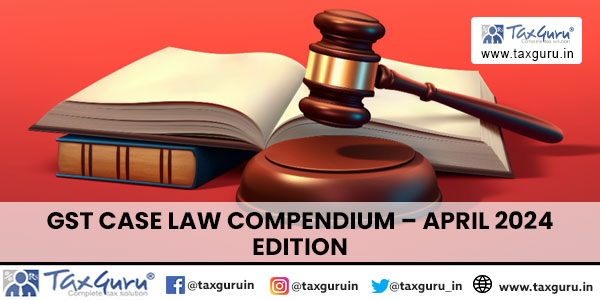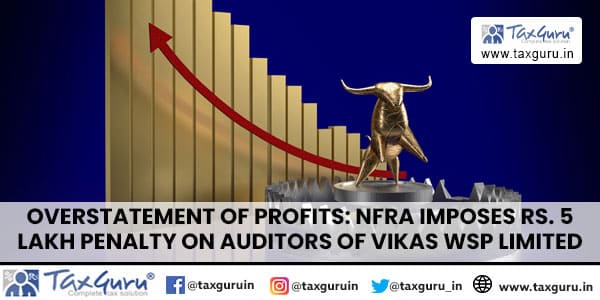I. CENTRAL EXCISE
1. Date of Applicability – Check the Link Below
Date of Applicability of Amendments in Custom and Central Excise Duty
2. Rate structure for goods, other than petroleum:
3.1 The standard rate of Central Excise duty for non-petroleum products has been enhanced from 10% to 12% ad valorem. The merit rate of excise duty for non-petroleum goods that hitherto attracted 5% has been increased to 6%. Similarly, the rate of duty of 1% imposed on 130 items in the last Budget has been increased to 2%. The exceptions to this increase are:
- Goods of heading no. 2701, i.e. coal;
- All goods of Chapter 31, other than those clearly not to be used as fertilizers;
- Articles of jewellery of heading 7113; and
- Mobile handsets and cellular phones of heading 8517.
3.2 As in the past, this concessional duty would be available only for goods in respect of which credit of duty on inputs and tax on input services has not been taken. Wherever credit is taken, the applicable duty would be 6%. In the case of jewellery, the scheme of levy has been rationalized. The details are discussed at para 8 below.
3.3 Changes consequential to changes in rate structure discussed above have also been carried out for clearances made by Export Oriented Units into the Domestic Tariff Area. The rate of excise duty on Medicinal and Toilet Preparations under the M&TP (Excise Duties) Act has also been increased from 1 0% to 1 2% ad valorem.
3.4 As far as possible, the standard rate and the merit rate (of 6%) have been incorporated in the First Schedule to the Central Excise Tariff itself through suitable entries in the Finance Bill, 2012 (clause 141). Owing to the fact that the current tariff rates for most of the lines are higher, these rates have been given effect to through notification no. 18/2012-CE dated 17th March, 2012 till the time of enactment of the Finance Bill.
3.5 In most cases, concessional rates of duty were prescribed in notification nos. 3 to 6/2006- CE, all dated 1st March, 2006 and Notification no. 3/2005-CE dated 24.2.2005. Concessional rates were also available in notification nos.10/2006-CE dated 1.3.2006; 2/2008-CE dated 1.3.2008; and 59/2008-CE dated 7.12.2008. For ease of reference, many of these exemption notifications have been merged and the entries arranged in chronological order in notification no. 12/2012-CE dated 17.3.2012.
Cement:
3.6 The rate structure applicable to Portland cement falling under heading no.252329 has been revised. Both for packaged cement manufactured by mini-cement plants as well as non-mini cement plants, there were differential rates of duty depending on the Retail Sale Price (RSP) per bag of 50kgs, so far. Moreover, the rates of duty applicable to mini-cement plants were lower compared to non-mini plants. Now, a uniform rate of duty is being prescribed regardless of the RSP per bag although a difference in the rates applicable to mini and non-mini cement plants is being retained. The details of these changes are as under:
|
S.No.
|
Description of goods
|
Earlier rate
|
Revised rate
|
| 1. | Packaged cement manufactured in a mini-cement plant – | ||
| (i) Of retail sale price not exceeding Rs.190 per 50 kg bag or of per tonne RSP not exceeding Rs.3800 | Rs.185 PMT | 10% ad valore | |
| (ii) Of retail sale price exceeding Rs.190 per 50 kg bag or of per tonne RSP not exceeding Rs.3800 | Rs.315 PMT | 10% ad alorem + Rs.30 PM | |
| 2. | Packaged cement manufactured in a plant other than a mini-cement plant | ||
| (i) Of retail sale price not exceeding Rs.190 per 50 kg bag or of per tonne RSP not exceeding Rs.3800 | Rs.290 PM | 10% ad valorem + Rs.80 PM | |
| (ii) Of retail sale price exceeding Rs.190 per 50 kg bag or of per tonne RSP not exceeding Rs.3800 | 10% of retail sale Price | 10% ad valorem + Rs.160 PM |
Automobiles:
3.8 Rates of excise duty applicable to motor vehicles falling under heading nos.8702 and 8703 have been enhanced in the following manner:
| S. No. |
Description of goods |
Earlier rate |
Revised |
| I. Length not exceeding 4 metres | |||
| 1. | Engine capacity not exceeding 1200cc (petrol, LPG or CNG) | 10% ad val |
12% ad val |
| 2. | Engine capacity not exceeding 1500 cc (diesel) | 10% ad val |
12% ad val |
| II. Others | |||
| 1. | Engine capacity not exceeding 1500 cc | 22% ad val |
24% ad val |
| 2. | Engine capacity exceeding 1500 cc | 22% + ` 15000 per unit |
27% ad val |
4. Cigarettes and biris:
4.1 There are two important changes in the rate structure applicable to cigarettes. The first is
a modification in the size of the length-wise slabs for filter and non-filter cigarettes. Both in the case of filter and non-filter cigarettes, the lowest slab [tariff items 24022010 and 24022030] is of length not exceeding 60mm. This has been revised to length not exceeding 65mm. The size of the next slab [tariff items 24022020 and 24022040] has been curtailed for both categories and will now cover cigarettes of length exceeding 65mm but not exceeding 70mm. Corresponding changes have been made in the Seventh Schedule to the Finance Act, 2001 [pertaining to the levy of National Calamity Contingent Duty –NCCD] and the Seventh Schedule to Finance Act, 2005 [relating to the levy of Additional Duty on Tobacco Products]. These changes have been carried out in the First Schedule to the Customs Tariff too.
4.2 As regards the rates of duty applicable to cigarettes, the specific rate of basic excise duty of ` 509 per thousand sticks currently applicable to cigarettes of length not exceeding 60mm will now apply to cigarettes of length not exceeding 65mm. Suitable exemption notifications have been issued for all three duties viz. basic excise duty, NCCD and Additional Duty of Excise to prescribe the rate currently applicable to cigarettes of length not exceeding 60mm to cigarettes of length not exceeding 65mm [Notification nos.9/2012-CE, 10/2012-CE and 11/2012-CE all dated 17th March, 2012 may be seen]. For all slabs above this length i.e. 65mm, an ad valorem component of 1 0% has been added to the existing specific rates. As the relevant clause by virtue of which this changes is proposed in the Finance Bill [Clause 141] has been declared under the Provisional Collection of Taxes Act, 1931, this increase in duty would take effect immediately- from the midnight of 16th/17th March, 2012.
4.3 Cigarettes have been notified under section 4A of the Central Excise Act. Accordingly, the value for the purpose of charging the ad valorem component of duty would be the Retail Sale Price (RSP) printed on the pack less abatement of 50% [Notification Nos. 7/2012-CE(NT) dated 17th March, 2012 refer]. The Third Schedule of the Central Excise Act has also been amended to include cigarettes through clause 140 of the Finance Bill, 2012. The implication is that the processes of packing or repacking of cigarettes and their labeling or relabeling including declaration or alteration of Retail Sale Price shall be deemed to be processes amounting to “manufacture”. By virtue of declarations under the Provisional Collection of Taxes Act, the changes in rates and other related changes for cigarettes shall come into effect tonight i.e. the midnight of 16th/17th March,2012.
4.4 Basic Excise duty on cigars, cheroots and cigarillos has been increased from “10% or `1227 per thousand, whichever is higher” to “12% or `1 370 per thousand, whichever is higher”. By virtue of declarations under the Provisional Collection of Taxes Act, the changes in rates and other related changes for cigarettes shall come into effect tonight i.e. the midnight of 16th/17th March,201 2.
4.5 In the case of bidis, the rates of basic excise duty for both hand-rolled and machine-rolled bidis have been increased by `2 per thousand. Thus, BED on hand-rolled bidis (tariff item 2403 1921) has gone up from `8 to `10 per thousand sticks and that on machine-rolled bidis (tariff item 2403 1929) from `19 to `21 per thousand. [Notification No. 12/2012-CE dated 17th March, 2012 may be seen for details].
5. Pan Masala, Gutkha, Chewing tobacco, Zarda Scented Tobacco and Unmanufactured tobacco in pouches:
5.1 The above items packed in pouches with the aid of packaging machines are leviable to excise duty in terms of section 3A of the Central Excise Act. The rates of duty applicable to all these items under the compounded levy scheme have been increased. The details are available in notification nos. 13 and 14/2012-CE both dated 17th March, 2012.
5.2 For Zarda Scented tobacco covered by the aforesaid provisions, Cenvat Credit of duty paid on goods cleared in bulk has been allowed to manufacturers packing it in pouches and operating under the compounded levy scheme.
6. Ready-Made Garments, made-up articles and textiles:6.1 The rate of excise duty applicable to ready-made garments and made-up articles of textiles falling under Chapters 61, 62 and 63 (heading nos.63.01 to 63.08) of the Central Excise Tariff except those falling under heading nos.63.09 and 63.10 when they bear or are sold under a brand name has been increased from 10% to 12%. However, the tariff value for these items has been revised and shall now be equal Retail Sale Price (RSP) less abatement of 70% instead of 55%. In other words, duty would be payable on 30% of the RSP.
6.2 In terms of notification no.31/2011-CE dated 24.3.2011, full exemption from Central Excise duty is available to duty-paid, branded ready-made garments and made-ups returned or brought back to the same factory or premises and cleared after being re-made, re-conditioned, repacked or subjected to any other process, subject to the fulfillment of certain conditions. Certain procedural relaxations have been made in the operation of this exemption. The exemption will now be available to goods returned or brought back to any registered premises of the same brand owner/ manufacturer and not only to those returned to the same factory. It would be available only if the goods are returned or brought back within a maximum period of one year from the date of their clearance. It has been clarified by way of an explanation that the threshold limit of 10% of the aggregate value of clearances for home consumption in the preceding year is to be computed for each factory/ registered premises separately. It has also been clarified that in computing this limit the value of goods cleared under the provisions of rule 16 of the Central Excise Rules are to be excluded. Finally, duty-free clearance after the prescribed processes have been carried out on the returned goods is to be allowed on the basis of a declaration from the manufacturer that the goods are duty-paid. This aspect should be verified on the basis of documents/ records maintained by the manufacturer at the time of audit of the unit.
6.3 The effective excise duty rate applicable to the textile sector (other than readymade garments and made ups bearing a brand name or sold under a brand name) is currently covered by Notification No. 29/2004-CE dated 9.7.2004. This notification is being superseded by notification no. 7/2012 –CE dated 17th March, 2012.
7. Footwear:7.1 Hitherto, footwear was subject to a three-tier excise duty rate structure. Footwear with RSP not exceeding ` 250 per pair was fully exempt; that with RSP exceeding ` 250 but not exceeding ` 750 per pair attracted the merit rate of 5% ad valorem and that with RSP exceeding ` 750 was chargeable to the standard rate. This rate structure is being rationalized into two slabs. Thus, footwear with RSP not exceeding ` 500 per pair has been fully exempted, while full duty would be chargeable on footwear with RSP exceeding ` 500 per pair.
7.2 The full exemption available to this item is subject to the fulfillment of the condition that the RSP should be indelibly marked or embossed on the footwear itself. It may kindly be ensured that this condition is complied with both for imported footwear and footwear manufactured domestically.
8. Precious metals and jewellery:
8.1 The scheme of levy of excise duty on precious metal jewellery has been revamped. Hitherto excise duty of 1% ad valorem was applicable to precious metal jewellery manufactured or sold under a brand name. The levy would now apply to both branded and unbranded goods (except silver jewellery) although at the same rate of duty of 1%. The important features of the scheme are as under:
i. Duty would be chargeable on tariff value which is being prescribed under section 3 of the Central Excise Act.
ii. Tariff value would be equal to 30% of the “transaction value” declared on the invoice and transaction value shall have the same meaning as assigned to it under section 4 of the Central Excise Act.
iii. The benefit of SSI exemption would be available to manufacturers of precious metal jewellery and the aggregate value of clearances (both for the purpose of eligibility and exemption) would be computed on the basis of tariff value. Suitable provisions are being incorporated in notification no. 8/2003-CE dated 1st March, 2003 so that for the purpose of determining eligibility of a manufacturer/ factory for SSI exemption for the year 2012- 13, the computation of aggregate value of clearances of ` 4 crore for the year 2011-12 is made on the basis of the tariff value i.e. taking 30% of the transaction value and not full transaction value. It may be noted that the exemption limit for the remaining part of 2011-12 i.e. between 17th March, 2012 and 31st March, 2012 is not being curtailed for manufacturers of unbranded jewellery who would come into the tax net afresh. In other words, eligible manufacturers/ factories would be entitled to exemption for the full threshold limit of `1.50 crore for this period. For manufacturers who are already availing of the SSI exemption during 2011-12 also the computation of the exemption limit would have to be made on the basis of tariff value of clearances effected during the period from 17th March, 2012 to 31st March, 2012 by virtue of Explanation (C)(ii) of notification no.8/2003-CE dated 1.3.2003.
Illustration- If a manufacturer X clears goods of value 1.4 crore till 16th March 2012, and from 17′th March to 31st March 2012 manufacturer X clears goods of transaction value 30 lacs, the total value of clearances for SSI exemption in financial year 2011-12 shall be calculated as follows:-
Value of clearances from 1st April 2011 to 16th March 2012=Rs. 1.4 crore
Value of clearances from 17′th March to 31st March 2012= Rs. 9 lacs(30% of transaction value 30 lacs)
Total value of clearances financial year 2011-12= Rs. 1.49 crore
iv) Rule 12AA of the Central Excise Rules has been amended to provide that every person who gets articles of jewellery of heading no.7113 produced or manufactured on job-work shall obtain registration, maintain accounts, pay duty leviable on such goods and comply with the procedural requirements, as if he is the manufacturer. In other words, those artisans or goldsmiths who only manufacture jewellery for others on job-work need not obtain registration. The option to the job-worker to register, if he so desires, has been deleted.
It may kindly be ensured that the implementation of this scheme happens in a smooth, trade-friendly manner and no harassment is caused to assessees.
8.2 Unbranded jewellery is currently exempt. Full exemption from excise duty is being provided to branded silver jewellery. It may also be noted that in respect of articles of precious metals, the levy would continue to apply only to those articles that are manufactured or sold under a brand name. Full exemption from excise duty has been provided to gold coins of purity 99.5% and above and silver coins of purity 99.9% and above when manufactured from gold or silver on which the appropriate duty of customs or excise has been paid.
8.3 Excise duty on refined gold manufactured starting from the stage of ore, concentrate or dore bars has been increased from 1.5% to 3%. The same rate has been prescribed for refined gold produced from the smelting of copper. Refined silver obtained from the smelting of copper shall henceforth attract excise duty of 4%.
8.4 Excise duty on gold jewellery sold from EOUs into DTA has been increased from 5% to 10%.
9. Chassis for automobiles and parts of electric/ hybrid vehicles9.1 Excise duty structure applicable to chassis falling under heading 8706 has been rationalized. Hitherto, such chassis attracted composite rates of duty consisting of an ad valorem component of 10% or 22% and a specific component of `10,000 per chassis. These have now been combined into an ad valorem rate and increased to 15% or 25% ad valorem respectively.
9.2 Concessional excise duty rate of 6% is being prescribed for batteries supplied to manufacturers of electrically operated vehicles, including two and three-wheeled electric motor vehicles. The benefit of the exemption would be available only to those manufacturers registered with the Indian Renewable Energy Development Agency or any State Nodal Agency notified for the purpose by the Ministry of New and Renewable Energy for Central financial assistance.
9.3 In the case of Lithium Ion batteries, the processes of matching, batching and charging or making of battery packs have been deemed to be processes amounting to manufacture. For this purpose, a Note has been inserted in Chapter 85 of the First Schedule to the Central Excise Tariff. The merit rate of 6% shall apply to battery packs of lithium ion batteries when supplied to manufacturers of hybrid or electric vehicles.
10. Ships, vessels and dredgers:10.1 Full exemption from Central Excise duty (and hence CVD) available to ships, vessels and dredgers (goods of Chapter 89) was withdrawn in the last Budget and a concessional duty of 1% was imposed on the condition that no Cenvat Credit is taken by the manufacturer. Correspondingly, CVD of 5% became leviable on the import of these goods. By virtue of notification no.38/2011-CE dated 29th July, 2011 full exemption was granted to all goods of heading 8901 in respect of which a general licence under section 406 of the Merchant Shipping Act, 1958 has been granted by the Director General Shipping. The following changes have been made in the duty structure applicable to ships, vessels and dredgers:
(a) full exemption from excise duty available to ships and vessels shall now be available subject to fulfillment of the following conditions:
iii. such company or person undertakes to pay,-
Notification No. 12/2012-Central Excise dated 17th March, 2012 has been issued for this purpose.
(b) For the removal of doubts, a retrospective exemption from additional duty of customs (CVD) has been provided to “foreign-going vessels” imported into India for the period from 1st March, 2011 to 16th March, 2012 [Clause 125 of the Finance Bill, 2012 refers]. This shall come into effect on the date of enactment of the Bill.
(c) For the period starting 17th March, 2012, also full exemption from additional duty has been provided to “foreign-going vessels” imported into India but on the fulfillment of certain conditions viz that a Bill of entry shall be filed for the vessel when it converts into a “coastal” vessel and additional duty would be payable on the following basis:
i. if the licence obtained for coastal trade at the time of conversion is a general one i.e. without specified period of validity, duty would be payable as if there were no exemption;
ii. if the licence for coastal trade is for a specified period , and
a. import is by the owner of the vessel or his agent, then 1/120th part of the aggregate duty would be payable on the vessel for each month (or part thereof) of stay in India as a coastal vessel; or
b. if the import is against a lease agreement/ contract, then duty shall be payable on the lease value of the contract.
Illustration I: If a vessel imported by a Shipping Line ABC Company as a foreign-going vessel converts into a coastal vessel for 6 months and the value of the vessel declared by the importer is ` 2 crore, the duty payable would be calculated in the following manner:
(2*0.0618) * 6/1 20 = ` 61,800, where the rate of duty is 6.1 8%
Illustration II: If a vessel is imported by an Indian corporate on lease basis for use after import on payment of a total rental of ` 50 lakh for a period of 3 months, the duty payable would be calculated in the following manner:
50* 0.618 = ` 3.09 lakh, where the rate of duty is 6.18%
Notification No. 12/2012-Customs dated 17th March, 2012 has been issued for this purpose.
(d) Unlike other vessels, dredgers do not qualify for treatment as “foreign-going vessels” as they are not engaged in the carriage of goods or passengers In the case of import of dredgers too, additional duty would be payable on the basis of length of stay in India or lease value (as discussed for foreign-going vessels at sub-para (b) above). However, this duty would be payable at the time of import of the dredger.
Notification No. 19 and 20/2012-Customs both dated 17th March, 2012 have been issued for this purpose.
11. Crude Petroleum:11.1 The rate of cess leviable as a duty of excise on crude petroleum under the Oil Industries Development Act has been increased from ` 2500 per metric tonne to ` 4500 per metric tonne. [Clause 151 of the Finance Bill, 2012 refers]. A suitable declaration under the Provisional Collection of Taxes Act has been made in respect of this clause. Accordingly, the increase comes into force with effect from the midnight of 16th/17th March, 2012.
12. Relief Measures:12.1 Full exemption from excise duty has been provided in the following cases:
- Specified raw materials viz. stainless steel tube and wire, cobalt chromium tube, Hayness Alloy-25 and polypropylene mesh required for manufacture of Coronary stents/ coronary stent system and artificial heart valve on actual user basis.
- Refills and inks in bulk packs (not meant for retail sale) used for manufacture of pens of value not exceeding ` 200 per piece.
- The entry „intraocular lens‟ has been removed from Si Nos. 115 & 67 of Central Excise Notfn. Nos. 1/2011-CE & 2/2011-CE, both dated 1.3.2011 and will be exempted from Central Excise Duty under CETH 9021.
12.2 Parts, components and specified accessories viz. battery chargers, PC Connectivity Cables, Memory cards and hands-free headphones required for the manufacture of mobile phones are fully exempt. However, standard rate is chargeable when such goods are cleared as spares. Concessional rate of excise duty of 2% is now being provided for such spares on the condition that no CENVAT Credit of any inputs or input services is availed of.
12.3 Excise duty has been reduced from 10% to 6% on:
- Matches manufactured by “semi-mechanised” units – the latter being units that carry out the processes of frame-filling or dipping of splints with the aid of machines
- LED lamps
- Iodine
- Processed food products of soya
- Parts of Blood Pressure Monitors and Blood glucose monitoring systems (Glucometers) on actual user basis
- Specified raw materials viz. Polypropylene, Stainless Steel Strip and Stainless Steel capillary tube for manufacture of syringe, needle, catheters, and cannulae on actual user basis.
15.2 The provisions of the Central Excise Act relating to offences and penalties are being aligned with those under the Customs Act. In terms of section 9(1)(i) of the Act, offences involving excisable goods where the duty leviable exceeds ! 1 lakh are punishable with imprisonment for a term which may extend to seven years and with fine. It is proposed to enhance this duty amount to ! 30 lakh. [Clause 130 of the Bill refers]
15.3 Section 9A of the Act presently provides that all offences under the Act shall be deemed to be non-cognizable within the meaning of the Code of Criminal Procedure. Sub-section (1) of this section is proposed to be substituted to prescribe that offences, other than offences punishable with imprisonment of three years or more under section 9, shall be non-cognizable. [Clause 131 of the Bill refers]. Through clause 135 of Finance Bill, 2012, section 13 dealing with the power to arrest is being substituted with a new section 13 and section 13A. The revised section 13 provides that offences punishable with imprisonment of three years or more under section 9 shall be cognizable. Section 13A is being inserted to provide that bail in the case of offences punishable with a term of imprisonment of three years or more under section 9 shall not be granted by a Court or Magistrate without an opportunity being given to the Public Prosecutor to present his case. However, in the case of minors, infirm and women the Magistrate may grant bail. Further, it excludes the jurisdiction of police officers to initiate investigation of offences under the Central Excise Act, unless authorized in this behalf by the Central Government, by a special or general order
15.4 Section 12F relating to search and seizure is being amended to align the provisions with Customs Act (Clause 134). Section 18 is being substituted to provide that save as provided under the Central Excise Act, searches shall be carried out as per the procedure laid down in the Code of Criminal Procedure [Clause 136]. As a corollary to these changes, section 19 is being omitted and some consequential amendments are being carried out in section 20.
15.5 Section 1 1AC provides for reduced penalty if the duty along with interest is paid within 30 days of the communication of the order. It is being amended to make available the benefit of reduced penalty only if the reduced penalty is also paid within the specified period of thirty days. [Clause 133]
15.6 Notification No.1/2010-CE dated 6th February, 2010 provides exemption from Central Excise duty to goods cleared from new units or units that have undertaken substantial expansion in the State of Jammu and Kashmir for a period of ten years from the date of commencement of commercial production. Doubts were raised about the interpretation of provisions of this exemption relating to the date from which the ten years period is to be computed in the case of units undertaking substantial expansion. The notification is being amended retrospectively from the date of issue of the said notification i.e. 6th February, 2010 to provide that for units undertaking substantial expansion, the exemption period of ten years would be computed from the date of commercial production from the expanded capacity [Clause 139].
Amendments to First Schedule of Central Excise Tariff Act:
15.7 The First Schedule to the Central Excise Tariff is being amended so as to carry out the following changes:
- omit the words “or polishing” in Note 6 of Chapter 25 so as to remove doubts about the correct classification of polished marble;
- revise the description of tariff items 2601 11 10 to 2601 11 90 covering iron ore and concentrates based on Fe content;
- insert a note in chapter 48 to provide that notwithstanding anything contained in Note 12, if the paper and paper products of heading 4811, 4816 or 4820 are printed with any character, name, logo, motif or format they shall remain classified under Chapter 48 as long as such products are intended to be used for further printing, to avoid classification disputes;
- insert a note in Chapter 71 to provide that for the purposes of headings 7113 and 7114, the process of affixing or embossing trade name or brand name on articles of jewellery or on articles of goldsmiths‟ or silversmiths‟wares of precious metal or of metal clad with precious metal, shall amount to “manufacture”;
- insert a note in Chapter 72 to provide that the process of oiling and pickling in respect of goods of heading 7208 shall amount to “manufacture”;
- insert a note in Chapter 76 to provide that the process of cutting, slitting and printing of aluminium foils shall amount to “manufacture”;
- insert a note in Chapter 85 to provide that the processes of matching, batching and charging of Lithium ion batteries or the making of battery packs shall amount to “manufacture”;
- align the entries relating to copper scrap, brass scrap, nickel scrap, aluminium scrap, lead scrap and zinc scrap with the revised ISRI classification.
15.8 Through clause 142 of the Finance Bill, a Note is being inserted in Chapter 54 to provide that notwithstanding anything contained in Note 1, man-made fibre such as polyester staple fibre and polyester filament yarn manufactured from plastic and plastic waste including waste polyethylene terephthalate bottles shall be classified as textile material under Chapter 54 or Chapter 55, as the case may be. This amendment is being carried out with retrospective effect from 29.06.2010. Duty in respect of clearances already made is to be recovered from the manufacturers of these goods within one month of the date of enactment of the Finance Bill, 2012 failing which interest at the rate of 24% is payable. Simultaneously, the manufacturers are being permitted to take into account credit of duty paid on inputs, input services and capital goods.
16. Amendments in Central Excise Rules, 2002
16.1 Rule 22 (3) is being amended to empower the officers of audit, cost accountants and chartered accountants appointed under section 14A or 14AA to prescribe the time limit within which the units being audited will produce the documents.
17. Amendments in Cenvat Credit Rules, 2004
17.1 Rule 3(5) and 3(5A) are being amended to prescribe that in case the capital goods on which Cenvat credit has been taken are cleared after being used then the amount payable shall be either the amount calculated on the basis of Cenvat credit taken at the time of receipt reduced by a prescribed percentage or the duty on transaction value whichever is higher.
17.2 Rule 10A is being inserted to permit transfer of unutilized credit of SAD lying in balance at the end of each quarter to another factory of the manufacturer
17.3 Rule 14 is being amended to substitute the word “or” with “and” so that interest is not payable on credit wrongly taken unless the same is utilized. Similar changes are being carried out in Rule 16 of the Chewing Tobacco and Unmanufactured Tobacco Packing Machines (Capacity Determination and Collection of Duty) Rules, 2010. However, penalty provisions for such cases have not been amended.





